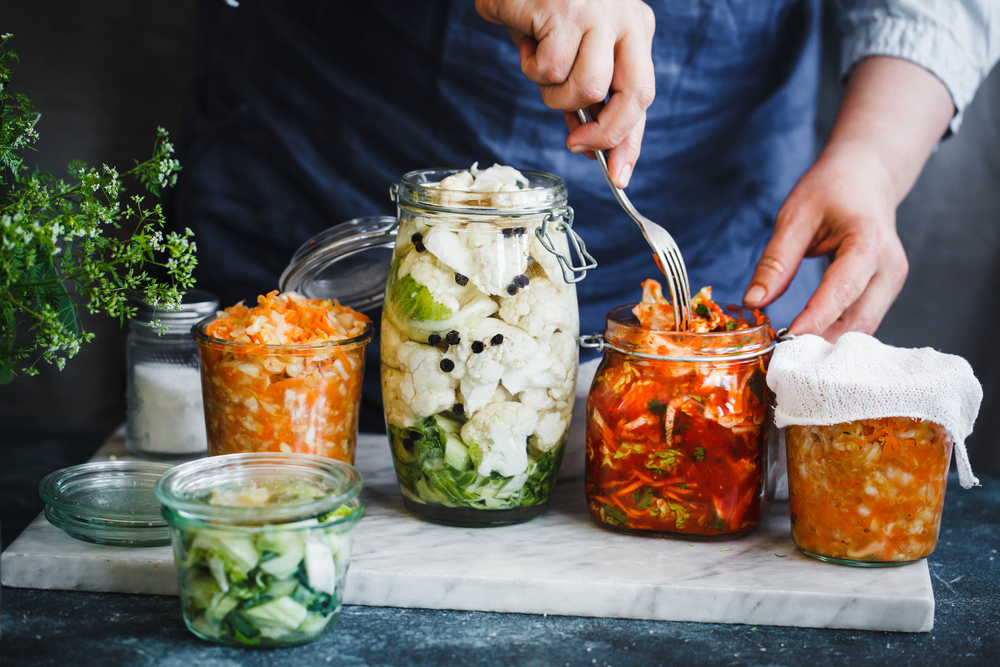
Fermentation for Beauty
Fermenting and culturing food seems like a popular trend now, but this time-tested process actually dates back thousands of years. In ancient times, we needed a way to preserve food when there was plenty so it would be available for times when it was scarce. We haven’t always have refrigeration to keep food fresh, and so our ancestors had to learn how to sustain themselves over time – and fermentation was one of the best ways to do this.
Food fermentation has been practiced on nearly every continent on this planet to sustain all different types of communities. Europeans first learned about sauerkraut from Asia where people had been pickling cabbage for thousands of years. Because of its high vitamin C content and other health benefits, sauerkraut became very useful in preventing scurvy and keeping people healthy throughout the cold winter months when no fresh food was available.
What is Fermentation?
Fermentation is the process of using bacteria, yeast or other microorganisms, in an oxygen-deprived environment, to convert the carbohydrates in food to organic acids. This is a beneficial process which produces good bacteria (probiotics) which helps to preserve the food and also makes it easier to digest.
Lacto-fermentation as fermentation is sometimes called, actually increases the nutritional content of foods dramatically. When food goes through the process of becoming fermented, it produces lactobacilli, and other positive strains of bacteria that help support our optimal health. When we have good levels of these bacterial allies in our bodies, we escape many common ailments such as acne, ADHD, allergies, anxiety, autism, depression, digestive issues, skin problems and more.
The practice of fermentation not only ensures a steady supply of nourishment, it also provides immune system support and better health by populating the digestive system with live enzymes and microflora. Today, as a whole, we are missing this valuable component. Our systems have been weakened by too much stress and antibiotic use, and an excess of caffeine, alcohol, chlorinated water, artificial sweeteners, processed foods, and other toxins.
Fermentation Balances Your Inner Ecosystem
Fermented foods are alive with enzymes and rich in beneficial microorganisms that populate our intestines and keep us healthy. When consumed, the good bacteria that are created from the fermentation process populate the intestinal tract and start to take over the bad bacteria. These good guys help the body by strengthening the immune system, manufacturing important vitamins, and keeping a healthy bacterial balance in our inner ecosystem. They contain enhanced nutritional benefits that help detoxify our bodies, assist with metabolism, support good digestion, reduce inflammation in the gut, and protect us against unwanted pathogens. They are also a great mood booster!
Human beings enjoy a symbiotic relationship with these helpful organisms that are supportive of health and beauty. They are essential to the body’s most basic processes. Bacteria are a critical part of the cycle of life. Scientists have recently discovered that our bodies are only 10% human and 90% microbial. The average person has over 100 trillion microbes in and on their body. We all have a balance of “good” vs. “bad” bacteria. Knowing what a significant role bacteria plays in our existence, we can see how important it is to keep a healthy balance of positive microbes over the ones that challenge our immune systems and try to break us down.
Good Bacteria: A Critical Beauty Component
Through use of antibiotics, we devastate the internal landscape of our digestive system. When this happens, the fungal microorganisms are able to gain ground and we become susceptible to immune system challenges and yeast overgrowth. If you know you have been affected by this, taking probiotics is an essential step to get your body back on track.
Did you know that bacteria have a voice? Most of the time when we get a craving for carbohydrates or sugar, it’s not really the human part of us having that craving… it’s the bad bacteria that want to be fed. When cravings strike, will power can be at a loss to fight the battle because, to the bad bacteria, this can be a life or death situation and those guys certainly do not want to die.
What do we tell people who ask us how to overcome a sugar craving or addiction? Eat more fermented foods!
How do Fermented Foods Affect Beauty?
Most Americans don’t get enough fiber in their diet, which leads to constipation. A common cause of disease originates in the colon when we develop excess accumulation of waste material and toxins. When your body tries to rid itself of toxins but can’t, it leads to auto-intoxication, where the toxicity your body is trying to release gets reabsorbed back into the bloodstream. From there the accumulation overflows and can impact other critical organs of detoxification including the kidneys and liver. As symptoms, we might start to get more frequent headaches, experience a lack of energy, inflammation in the joints, or notice troublesome skin conditions.
Consuming even a small amount of enzyme-rich fermented food can address this imbalance, helping to sweep the accumulated excess out of the digestive tract, encouraging healthy bowel movements and less constipation. A healthy colon moves once after each major meal. Having a clean colon has a direct impact on the beauty of your skin. When the colon and digestive systems are clean, it is reflected in the clarity and radiance of the skin. This is a great example of how the outside reflects the inside.
Add probiotics and fermented food to your diet and before long you will see glowing skin, sparkling eyes and radiant energy!
Fermentation Processes
There are different types of fermentation processes. Each one contains its own unique groups of activated bacteria and yeasts microbes. In order to be considered a true “fermented food”, the product must be alive (enzymes intact) and unpasteurized.
“Cultured” foods are foods that are no longer raw, but have had a bacterial starter culture added to them to incubate and simulate what happens with the raw foods. Cultured foods are also very helpful for the body. Culturing foods makes the nutritional components of food more bioavailable to the digestive system by “predigesting” them.
The beneficial microorganisms that are produced in the process of fermentation are destroyed by heat and pasteurization, so when you are shopping for probiotic foods, skip the canned jars of sauerkraut in the middle grocery aisle and head for the deli case where the real stuff is kept refrigerated… or even better, learn how to make your own! Usually the label will indicate “Contains live cultures” and those are the ones you want.
Beyond cabbage, many different foods and liquids can be fermented. You can turn almost anything ordinary into something extraordinary, creating the tools you need to restore your health, clear your skin, balance your energy and flood your body with life-giving nutrition.
The most common things to ferment at home are cabbage, tough vegetables like carrots or beets, and liquids like coconut water, coconut meat and tea. You can make things like sauerkraut, fermented veggies (delicious on a salad or quinoa) kefir, yogurt, lassi, or kombucha. You don’t need any kind of preservatives to keep these foods fresh, just keep them refrigerated which slows down the growth process of the bacteria. Homemade sauerkraut can last as long as 6 months in the refrigerator, but if you are eating it regularly it won’t last that long!
At the grocery store look for items like miso, natto, kvass, lassi and more. It’s important to enjoy a variety of fermented foods to maximize the biodiversity of your gut flora.
Here’s a delicious recipe you can make at home for Garlic Ginger Sauerkraut. It’s one of our favorites!
Garlic Ginger Sauerkraut
Ingredients:
2-3 heads Green/White Cabbage
5-6 Kale Leaves
2 Carrots
1” piece of Organic Ginger, grated with a microplane
2 cloves Garlic, grated with a microplane
2 tsp Celtic or Icelandic salt per pound of vegetables
Directions:
Shred the cabbage, carrots and kale leaves in a food processor, reserving a few whole cabbage leaves for storing the sauerkraut. Add a little salt and massage the shredded cabbage until it start to release water. It takes about 15 minutes of strong massaging to make the cabbage moist enough.
Add spices and seasonings to taste. Take a small amount of the shredded cabbage mixture and blend it with a little water to create a brine. Add the brine to the cabbage to ensure there is enough liquid to cover all the solids.
Make sure you have very clean glass jars to store the sauerkraut in while it is culturing. Fill the glass containers tightly with the cabbage mixture, making sure there is enough liquid to cover all the vegetables and there are no air bubbles. Top the jars with a whole cabbage leaf folded to fit the jar.
Seal the container tightly. Store the jars on a pie dish in a dark, temperate area for about a week. There may be liquid that seeps out of the top so you want to be sure not to damage any furniture.
Depending on the temperature the sauerkraut will be ready in about 5-10 days, so check it somewhat regularly after the first couple of days. When it tastes how you want it to, put the jars in the refrigerator and enjoy enzyme-rich beauty food for up to 6 months.
If you’d like to experiment with some yummo coconut fermented food recipes, check these ones out!

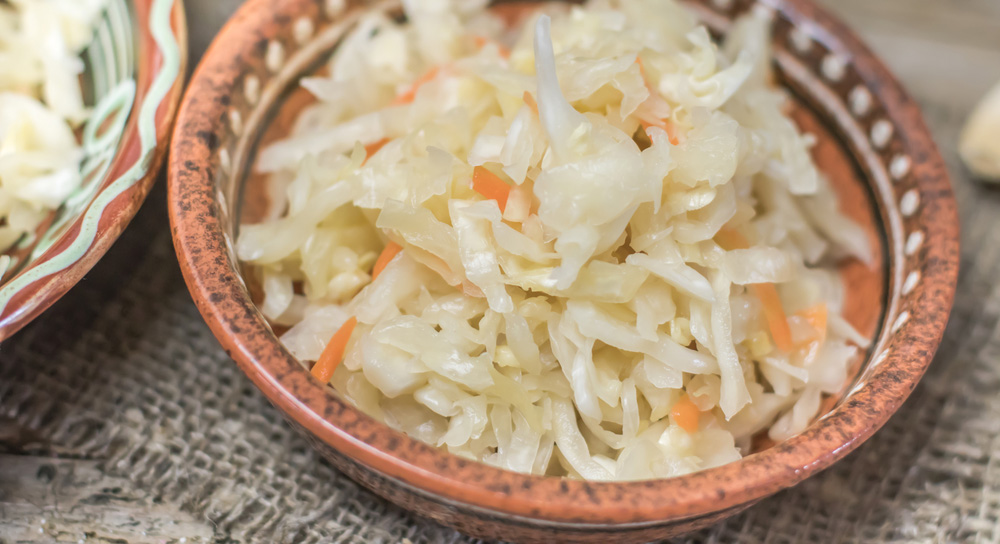
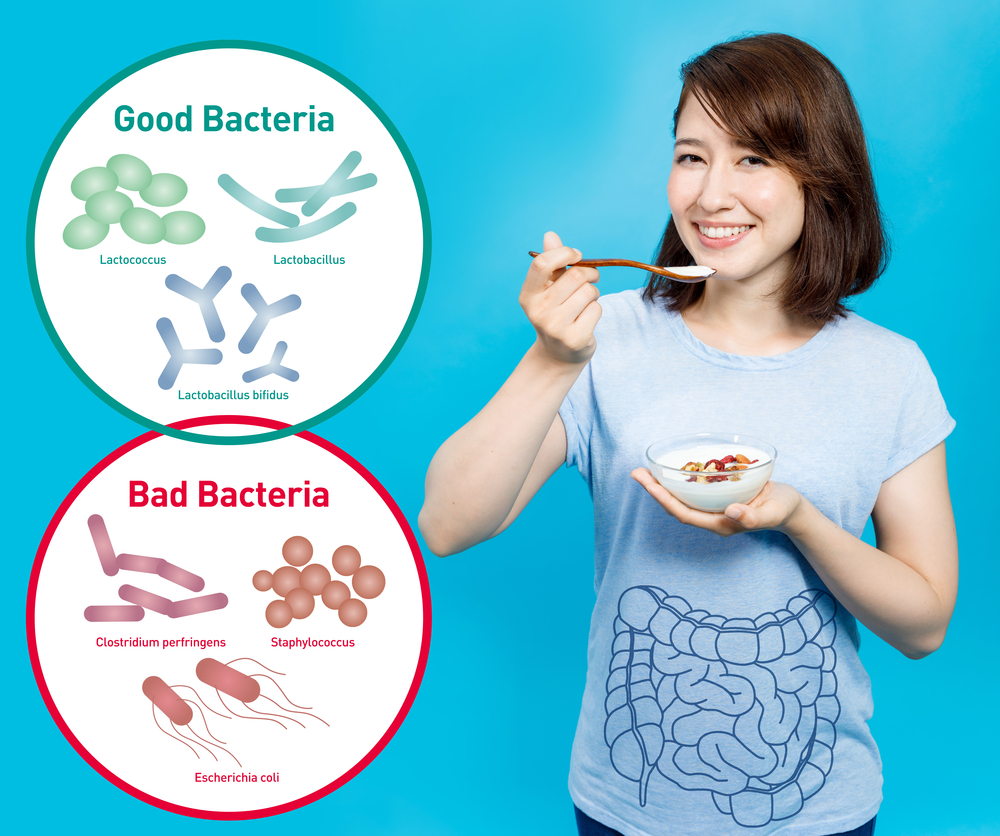
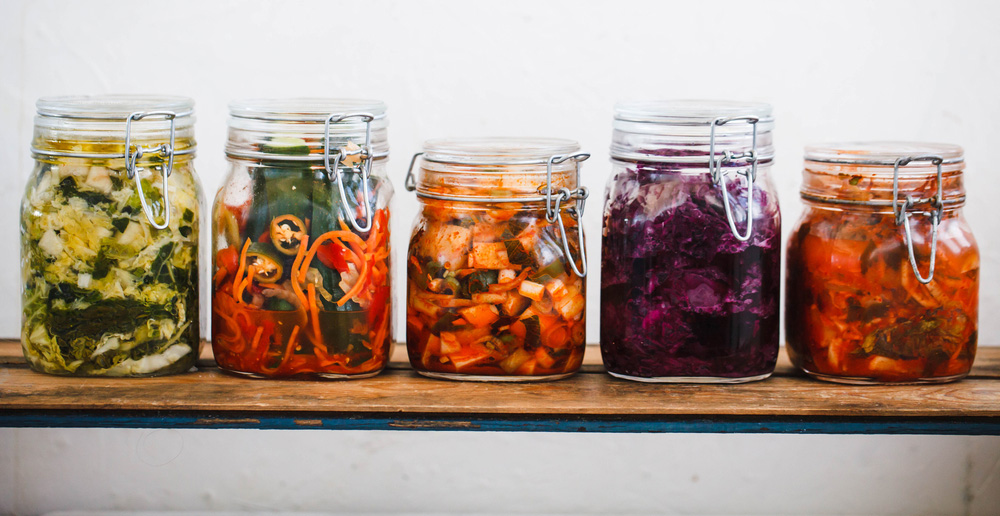
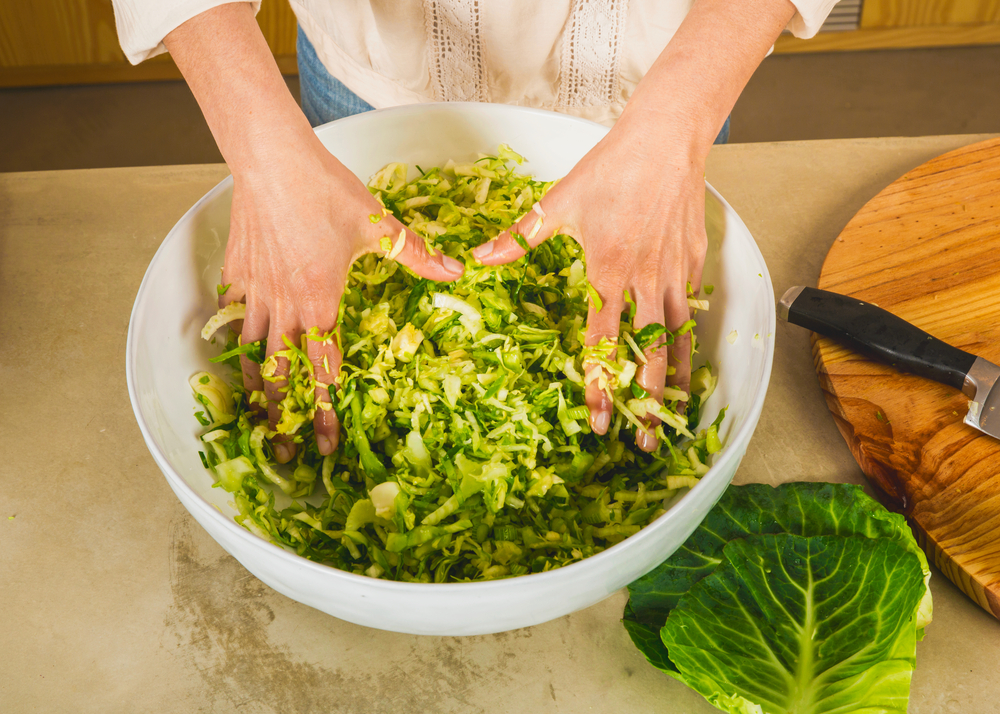
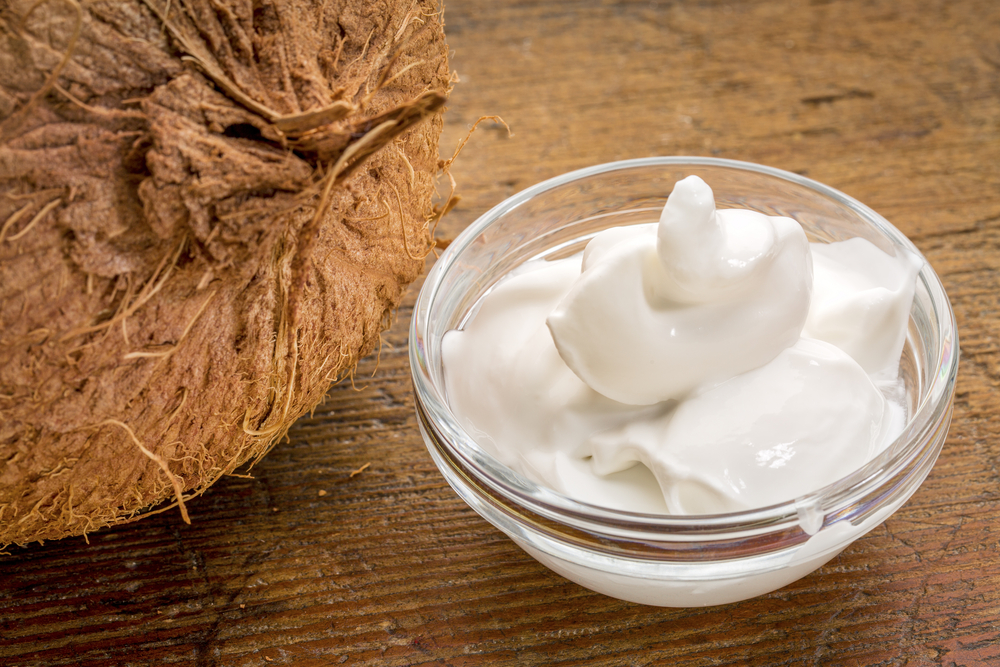
I’m breast cancer patient. I refuse to do the chemo theeapy nd change all my life style nd foid so can i eat such food??